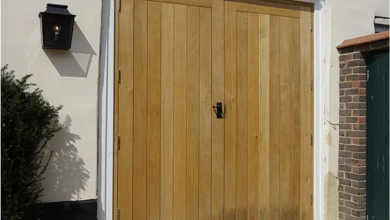Energy Efficiency and Aluminum Windows: What Homeowners Need to Know

I. Introduction
In today’s world, energy efficiency has become a paramount concern for homeowners. As we strive to reduce our carbon footprint and lower energy bills, every aspect of our homes comes under scrutiny. One often overlooked yet crucial element in this pursuit is the choice of windows. Among the various options available, aluminum windows have gained popularity due to their durability, sleek appearance, and potential for energy efficiency. In this comprehensive guide, we’ll explore the relationship between energy efficiency and aluminium windows, providing homeowners with the knowledge they need to make informed decisions.
II. Understanding Energy Efficiency in Windows
A. The Importance of Energy-Efficient Windows
Energy-efficient windows play a vital role in maintaining a comfortable indoor environment while reducing energy consumption. They act as a barrier against heat transfer, helping to keep homes cool in summer and warm in winter. This thermal regulation not only enhances comfort but also leads to significant savings on heating and cooling costs.
B. Key Factors Affecting Window Energy Efficiency
Several factors contribute to a window’s energy efficiency:
- U-Factor: This measures the rate of heat transfer through the window. A lower U-factor indicates better insulation.
- Solar Heat Gain Coefficient (SHGC): This represents the amount of solar radiation that passes through the window. A lower SHGC is preferable in hot climates, while a higher SHGC can be beneficial in colder regions.
- Air Leakage: This measures the amount of air that can pass through the window assembly. Lower air leakage rates contribute to better energy efficiency.
- Visible Transmittance: This indicates how much natural light passes through the window. Higher values allow more daylight, potentially reducing the need for artificial lighting.
III. Aluminum Windows: An Overview
A. Characteristics of Aluminum Windows
Aluminum windows have several distinctive features:
- Durability: They are resistant to corrosion, rust, and weathering.
- Low Maintenance: Aluminum windows require minimal upkeep.
- Strength: The material’s strength allows for slimmer frames, maximizing glass area.
- Recyclability: Aluminum is 100% recyclable, making it an environmentally friendly choice.
B. Types of Aluminum Windows
- Single-Pane Aluminum Windows
- Double-Pane Aluminum Windows
- Triple-Pane Aluminum Windows
- Thermally Broken Aluminum Windows
IV. Energy Efficiency of Aluminum Windows
A. Thermal Conductivity Concerns
One of the primary concerns with aluminum windows is their high thermal conductivity. Aluminum is an excellent conductor of heat, which can lead to increased heat transfer between the interior and exterior of a home. This characteristic has historically made aluminum windows less energy-efficient compared to other materials like wood or vinyl.
B. Advancements in Aluminum Window Technology
Despite the inherent thermal conductivity of aluminum, significant advancements have been made to improve the energy efficiency of aluminum windows:
- Thermal Breaks: These are insulating plastic strips placed between the interior and exterior aluminum frames to reduce heat transfer.
- Low-E Coatings: These microscopically thin, transparent coatings reflect infrared light, reducing heat transfer through the glass.
- Gas Fills: Inert gases like argon or krypton are used between glass panes to improve insulation.
- Multi-Pane Designs: Double or triple-pane windows with sealed air spaces between the glass layers enhance insulation.
C. Comparing Energy Efficiency: Aluminum vs. Other Materials
When comparing the energy efficiency of aluminum windows to other materials like wood, vinyl, or fiberglass, several factors come into play:
- Thermal Performance: With thermal breaks and advanced glazing technologies, modern aluminum windows can achieve comparable thermal performance to other materials.
- Longevity: Aluminum’s durability can contribute to long-term energy efficiency by maintaining its performance over time.
- Recyclability: The eco-friendly nature of aluminum can offset some of its energy efficiency drawbacks when considering the entire lifecycle of the window.
V. Factors Influencing the Energy Efficiency of Aluminum Windows
A. Frame Design
The design of the aluminum frame plays a crucial role in its energy efficiency:
- Thermal Break Technology: The effectiveness of the thermal break can significantly impact the window’s insulation properties.
- Frame Thickness: Thicker frames can provide better insulation but may reduce the glass area.
- Multi-Chamber Designs: Some advanced aluminum frames incorporate multiple chambers to enhance insulation.
B. Glazing Options
The choice of glazing can dramatically affect the energy efficiency of aluminum windows:
- Double vs. Triple Glazing: While triple glazing offers superior insulation, it comes at a higher cost and may not be necessary in all climates.
- Low-E Coatings: Different types of Low-E coatings can be chosen based on the climate and orientation of the windows.
- Gas Fills: The choice between argon and krypton gas fills can impact both performance and cost.
C. Installation Quality
Even the most energy-efficient aluminum window can underperform if not installed correctly. Proper installation ensures:
- Airtight Seals: Preventing air leakage around the window frame.
- Correct Positioning: Ensuring the window is level and plumb for optimal performance.
- Appropriate Insulation: Using the right insulation materials around the window frame.
VI. Energy Efficiency Ratings and Certifications for Aluminum Windows
A. ENERGY STAR Certification
ENERGY STAR is a widely recognized program that certifies energy-efficient products, including windows. Aluminum windows that meet strict energy efficiency guidelines can earn this certification, providing homeowners with assurance of their performance.
B. National Fenestration Rating Council (NFRC) Labels
The NFRC provides standardized ratings for windows, including:
- U-Factor
- Solar Heat Gain Coefficient (SHGC)
- Visible Transmittance
- Air Leakage
These ratings allow homeowners to compare the energy performance of different windows objectively.
C. Other Regional and International Standards
Depending on the location, other standards and certifications may apply, such as:
- European CE Marking
- Australian Window Energy Rating Scheme (WERS)
- Canadian Energy Rating (ER) System
VII. Cost Considerations and Return on Investment
A. Initial Costs vs. Long-Term Savings
While energy-efficient aluminum windows may have a higher upfront cost, they can lead to significant long-term savings through reduced energy bills. We’ll explore the factors that influence the return on investment, including:
- Climate Zone: The potential for energy savings varies depending on local weather patterns.
- Energy Prices: Higher energy costs can lead to quicker payback periods.
- Window Orientation: South-facing windows may benefit more from certain energy-efficient features.
B. Government Incentives and Rebates
Many governments offer incentives for installing energy-efficient windows. We’ll discuss:
- Tax Credits: Available deductions for energy-efficient home improvements.
- Rebate Programs: Local and utility company offerings for energy-efficient upgrades.
- Financing Options: Special loans or financing programs for energy-efficient home improvements.
VIII. Maintenance and Longevity
A. Maintaining Energy Efficiency Over Time
To ensure aluminum windows maintain their energy efficiency, regular maintenance is crucial:
- Cleaning: Proper cleaning techniques to maintain the effectiveness of Low-E coatings.
- Weatherstripping: Regular inspection and replacement of weatherstripping to prevent air leakage.
- Hardware Maintenance: Keeping moving parts lubricated for proper operation.
B. Lifespan of Energy-Efficient Aluminum Windows
We’ll discuss the expected lifespan of energy-efficient aluminum windows and factors that can affect their longevity, such as:
- Environmental Conditions: Impact of coastal or industrial environments on window performance.
- Usage Patterns: How frequent operation can affect the window’s seals and hardware.
- Quality of Materials: The importance of choosing high-quality aluminum and components.
IX. Environmental Impact and Sustainability
A. Lifecycle Assessment of Aluminum Windows
We’ll explore the environmental impact of aluminum windows from production to disposal:
- Raw Material Extraction: The energy intensity of aluminum production.
- Manufacturing Process: Advancements in eco-friendly manufacturing techniques.
- End-of-Life Recycling: The recyclability of aluminum and its impact on sustainability.
B. Comparing Carbon Footprint
A comparison of the carbon footprint of aluminium windows versus other materials, considering:
- Production Energy: Energy required to manufacture different window materials.
- Transportation: Impact of weight on transportation-related emissions.
- Operational Energy Savings: Long-term environmental benefits of energy-efficient




